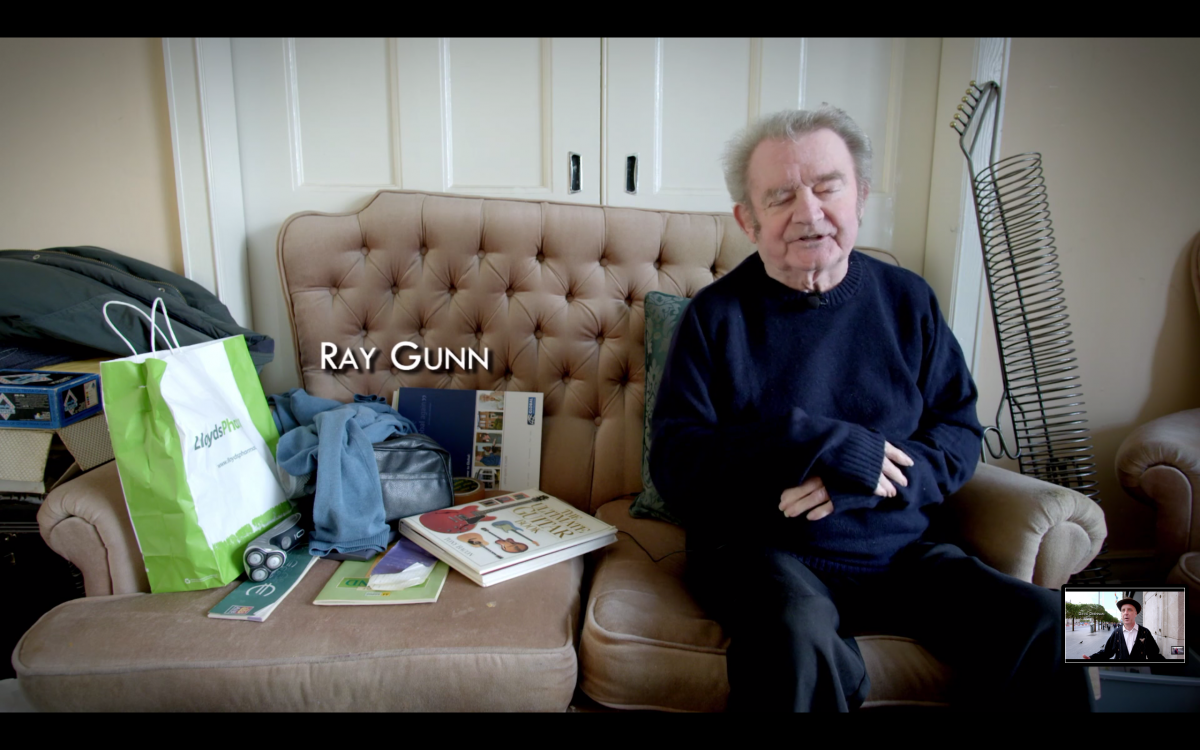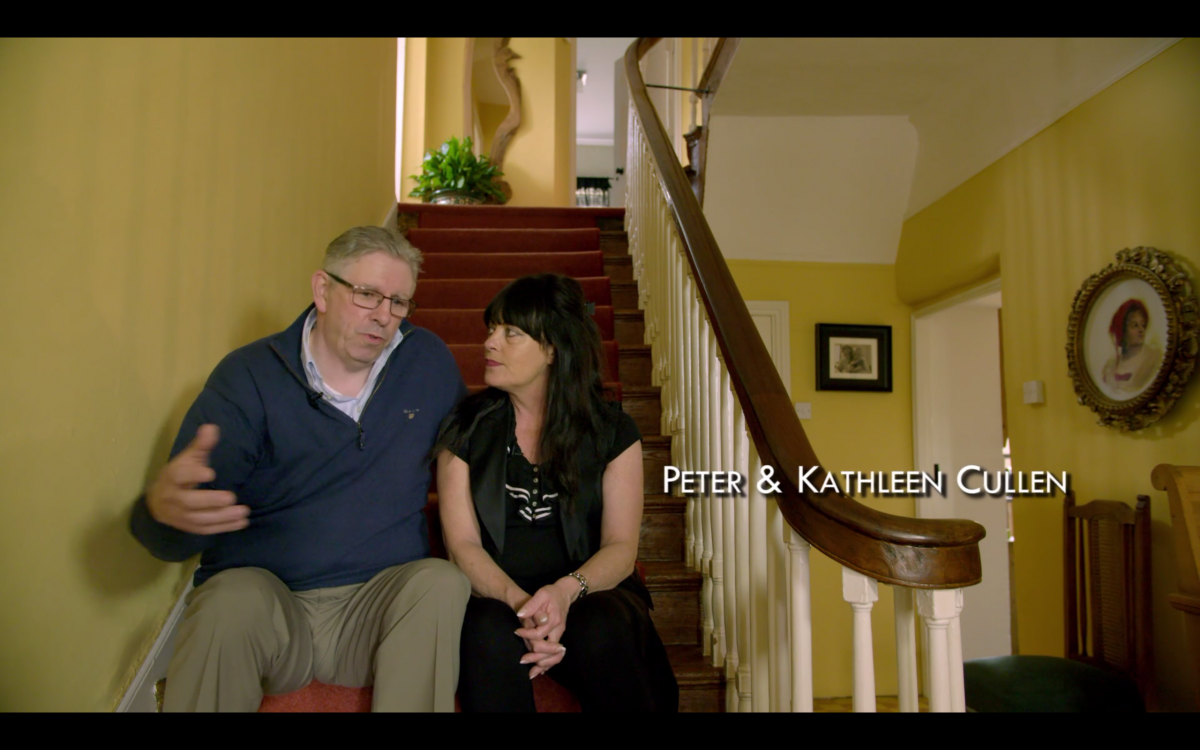Did the council follow the correct process to name Herzog Park back in 1995?
Or has Rathgar been living with Orwell Quarry Park all this time?
This documentary shows couples and individuals recounting romantic rendezvous under the iconic Clery’s clock on O’Connell Street. It looks at things worth cherishing from that time, and things best left in the past.

Under the Clock is a precious kind of picture. Short and sweet, it shows couples and individuals recounting romantic rendezvous under the iconic Clery’s clock on O’Connell Street.
It joins the likes of Older Than Ireland – produced by this film’s writer, Garry Walsh – and His and Hers in a recent run of cosy Irish documentaries. It’s easy to warm to, speaking to the highlights and lowlights of youth.
There’s a palpable nostalgia to the stories. We travel back in time with the interviewees as they recall the ins and outs of Dublin dating way back when. Family photos lend the stories a cheerful context as we chart the changing state of hairstyles throughout the ’60s and ’70s.
Tales of dance-hall etiquette are sure to raise a smile, and maybe an eyebrow, as the men and women think back on navigating the complex, and often bizarre, courtship rituals of the time. There’s a lot of laughing about the ins and outs of picking partners, cutting in on dances, or cutting hopeful suitors loose.
One of the subjects, a jokester musician named Ray Gunn, laughs about how tame everything was at these dances where “the strongest thing you could have was putrid cold tea”. This is accompanied by a pantomimed grimace.

Documentarians dream of characters like Ray Gunn. He’s a funny sort who’s always cracking wise, but director Colm Nicell’s framing makes it clear that there’s a difference between Gunn and some of the other subjects. Gunn sits alone while other cast members sit side by side.
The film doesn’t become bogged down in tragedies. But it doesn’t shy away from them either, and to Nicell’s credit, there’s a fine balance struck between serious-minded material and the lighter stuff.
Dorothy Collins says that prior to meeting her husband under the clock most of her experience of romance came from Mills and Boon novels, though we get the impression that this knowledge came from the True Love line rather than the Dark imprint. She now boasts a collection of over 100 collectable Mills and Boon mugs.
Indeed, most of the cast feel like gold mines of material. What are we to make of David Drennan, a hat-wearing photographer, and self-styled gigolo. He’s had recent experience of old-style dances due to his fondness for older women. He still attends tea dances to this day. It would be good to spend more time with him, and see what’s behind his offbeat charisma.
Also consider the story of Philippa Ryder, a trans woman who found friendship and support through meetings under the clock. Obviously, thorough explorations of every interesting character in the film would be beyond the scope of Under the Clock, but it hopefully provided Nicell with plenty of avenues for future exploration.
Another worthwhile diversion is the frequent talk of dating hotspots of the day. Peter and Kathleen Cullen recall trips to the pictures followed by a plate of chips and peas every Friday for four years or so.
There’s a good deal of reminiscing about cinemas in the film. Unlike the dancehall, the cinema was a place couples could let their hair down. Couples would “wear the face off of each other”, an embarrassed Ann Ball laughs when thinking about her early romantic escapades. “They’d lick the make-up off you.”

The film has nuggets of social history, too. We get a ranking of the cinemas around Dublin. One second-run theatre is affectionately named The Rat House.
There is also the realisation that the starry-eyed nature of these budding romances had more to do with wider social issues than the couples themselves.
“There was no sex in the ‘60s”, the words “mortal sin” come up a lot, and though it’s mentioned with the same joviality as most other topics in the film, you can tell that at the time, one’s soul and its purity were of paramount importance.
“There was a name for girls who stayed out late at night. ‘Common’,” says Olive Hartney. Her husband Anthony suggests another word: “sluts”. Olive nods in agreement.
Later, we hear from Charlie and Beatrice Stewart that neighbours and friends would keep track of the time between a couple’s wedding day and the birth of their first child. To make sure everything was right and holy.
Elsewhere, Christina Nicell speaks about the struggles she faced after leaving her abusive husband. These scenes offer a brief glimpse of the other side of the film’s earnest nostalgia, but changes in tone are momentary and generally speaking Under the Clock is in the business of merriment.
As the documentary nears its end, the cast consider the modern world. The dominant sentiment is that dating has changed and not for better.
The interviewees express bemusement over Tinder and its impact on love. Both Kathleen and Beatrice hit upon the idea that because courtships were longer back in the day, love was stronger.
The majority of the cast are testament to this. Charlie sums it up when he says: “Time is the most important thing we have. And if I could go back I’d still marry this woman.” Delightful.
Whether or not you take the same sceptical view of love in these fast times in which we are living, Under the Clock provides us with a look at things worth cherishing, and some things best left in the past.
And with the fate of Clery’s still up in the air, the prospect of meeting under the Apple store logo in the not-so-distant future feels a touch less romantic than romancing under the clock.